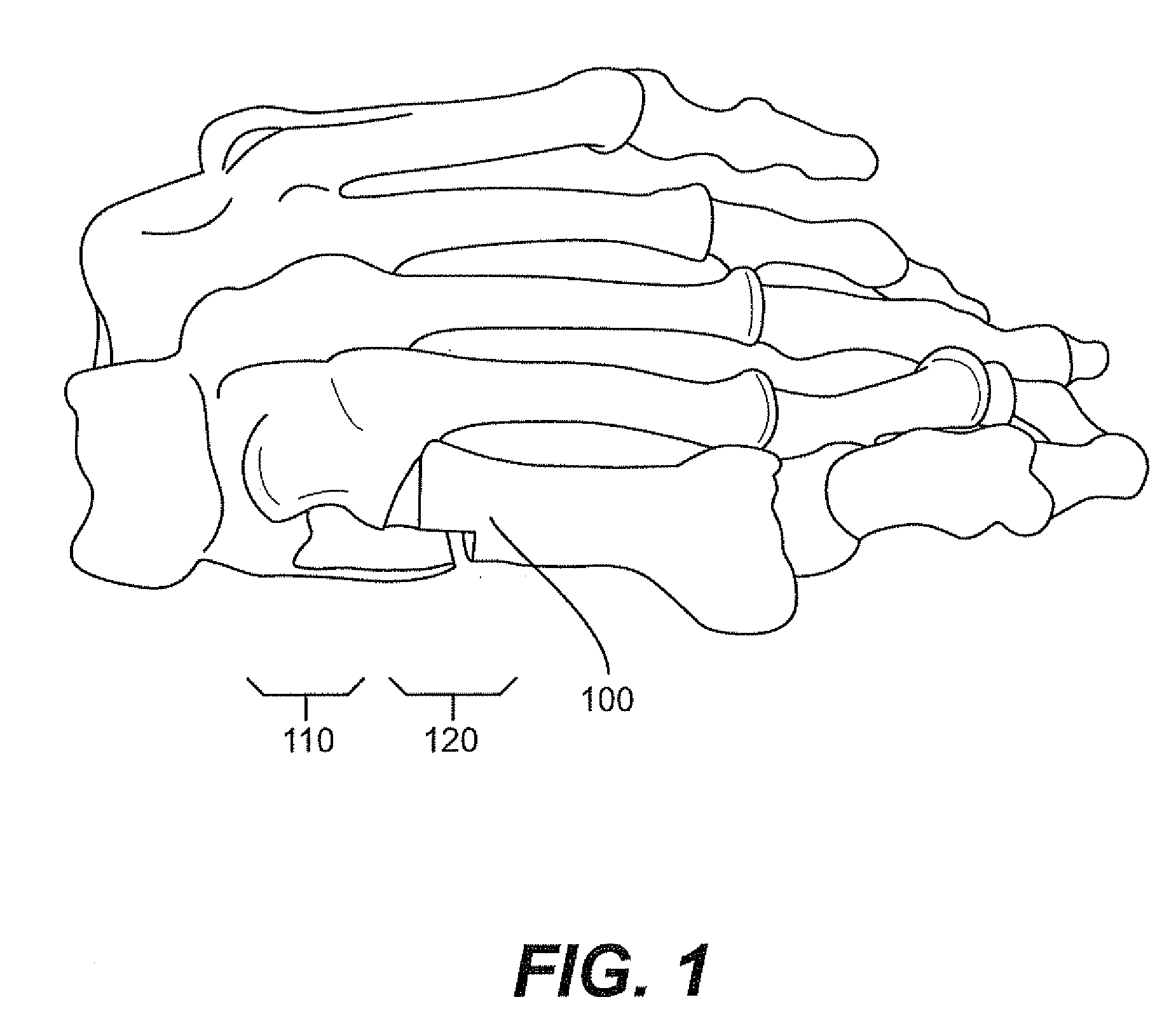Implant for correcting skeletal mechanics
a technology applied in the field of medical devices for enhancing and correcting skeletal mechanics, can solve the problems of no longer being able to support the first metatarsal, excessive strain on the soft tissues supporting this bone, and stretching of the soft tissues
- Summary
- Abstract
- Description
- Claims
- Application Information
AI Technical Summary
Problems solved by technology
Method used
Image
Examples
Embodiment Construction
[0019]Turning to figure three, the plate has a proximal (back portion) and distal (front portion) end. The proximal wider end of the plate has two screw recesses 354, 355 for fixation of the plate in the first cuneiform. The wedge on the lateral side of the plate will be introduced between the first metatarsocuneiform joint to correct transfer of weight from the first cuneiform to the base of the first metatarsal bone. The distal narrower end of the plate also has two screw recesses 356, 357 for fixation onto the first metatarsal bone. Also found on the plate are two holes, one the proximal 352 and distal 350 segment for the first metatarsal and the first cuneiform bones. These holes are for temporary pin stabilization to hold the plate in place while the screws placed in the screw recesses (356, 357, 352, 350) to fixate the plate to the bones. See also similar screw recesses in FIGS. 4 and 5 (456, 457, 452, 450; 556, 557, 552, 550).
[0020]The interpositioned wedge will consist of va...
PUM
 Login to View More
Login to View More Abstract
Description
Claims
Application Information
 Login to View More
Login to View More - R&D
- Intellectual Property
- Life Sciences
- Materials
- Tech Scout
- Unparalleled Data Quality
- Higher Quality Content
- 60% Fewer Hallucinations
Browse by: Latest US Patents, China's latest patents, Technical Efficacy Thesaurus, Application Domain, Technology Topic, Popular Technical Reports.
© 2025 PatSnap. All rights reserved.Legal|Privacy policy|Modern Slavery Act Transparency Statement|Sitemap|About US| Contact US: help@patsnap.com



